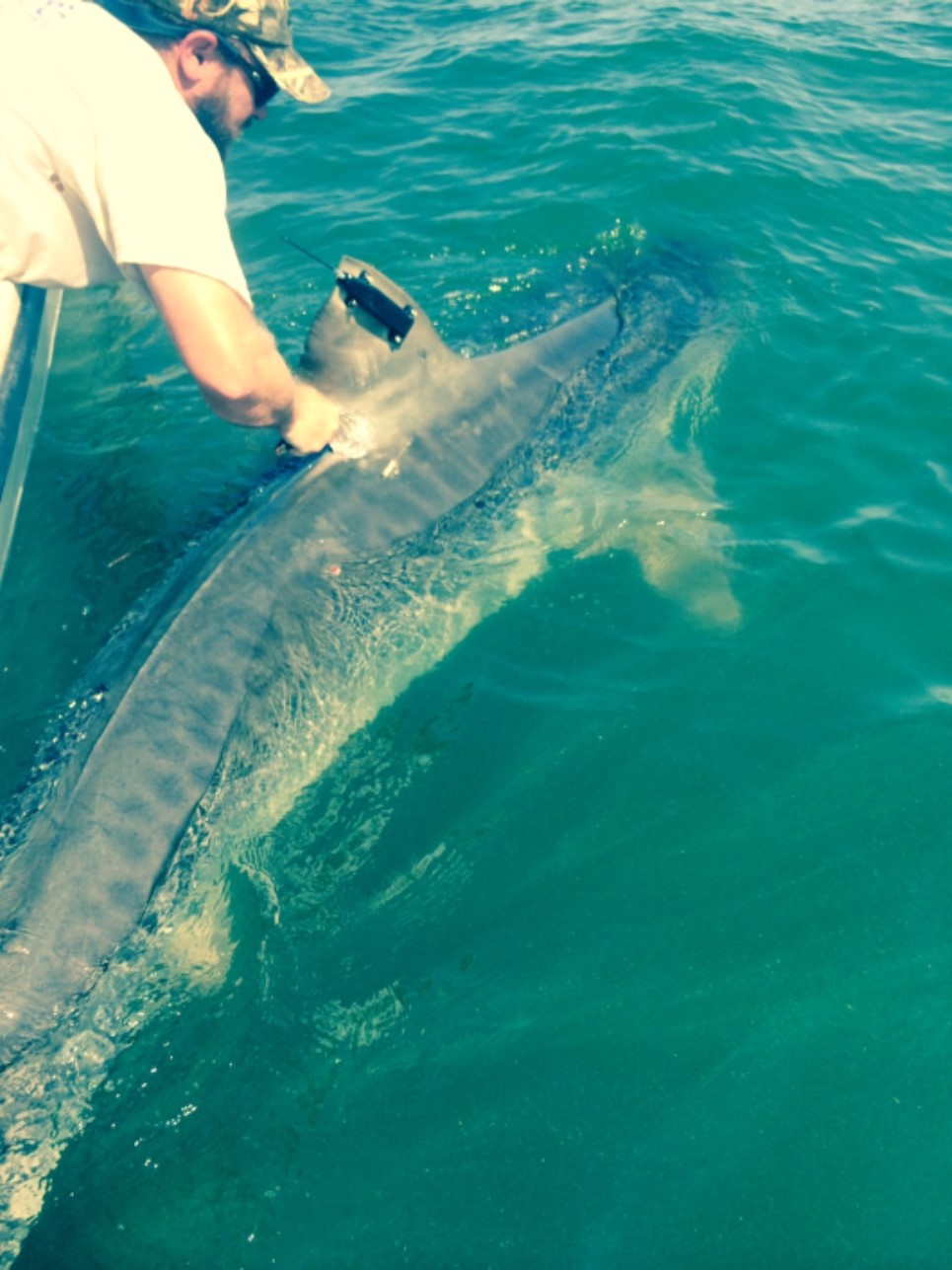Sharks as Indicator Species
Sharks are excellent indicators of environmental health because they are top predators and are abundant locally. Combining rod and reel fishing and longlining, researcher Michelle Evans of Coastal Carolina University caught and tagged sharks in Port Royal Sound. A majority of the sharks caught were Atlantic sharpnose sharks, but there were also blacktip, blacknose, finetooth, sandbar, bonnethead, scalloped hammerhead and tiger sharks, in addition to Atlantic and Southern stingrays.
On September 19, 2014, Captain Chip Kelly and South Carolina Department of Natural Resources marine biologist Bryan Frazier caught and tagged a 12 foot 2 inch, 800 pound female tiger shark in Port Royal Sound as part of a shark research study being conducted in our waters. The study is a partnership between SCDNR and OCEARCH, a nonprofit organization that conducts global research on white sharks, tiger sharks, and other large apex predators. Their efforts enable researchers and institutions to obtain data on the movement, biology and health of sharks while enhancing public safety and education. LCI sponsored the tagging of this particular tiger shark. She was named Bailey after our very own Bailey Symington because of her ongoing support of LCI and other conservation organizations.

